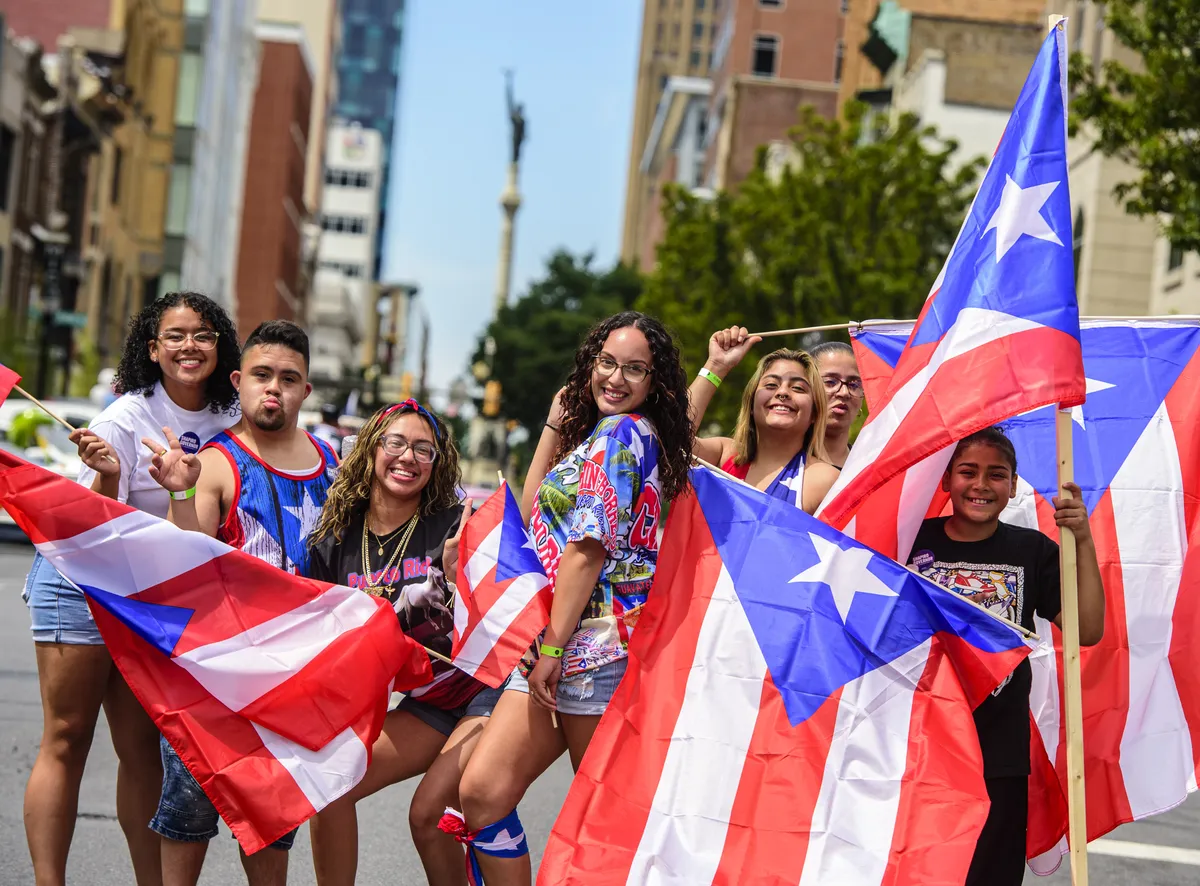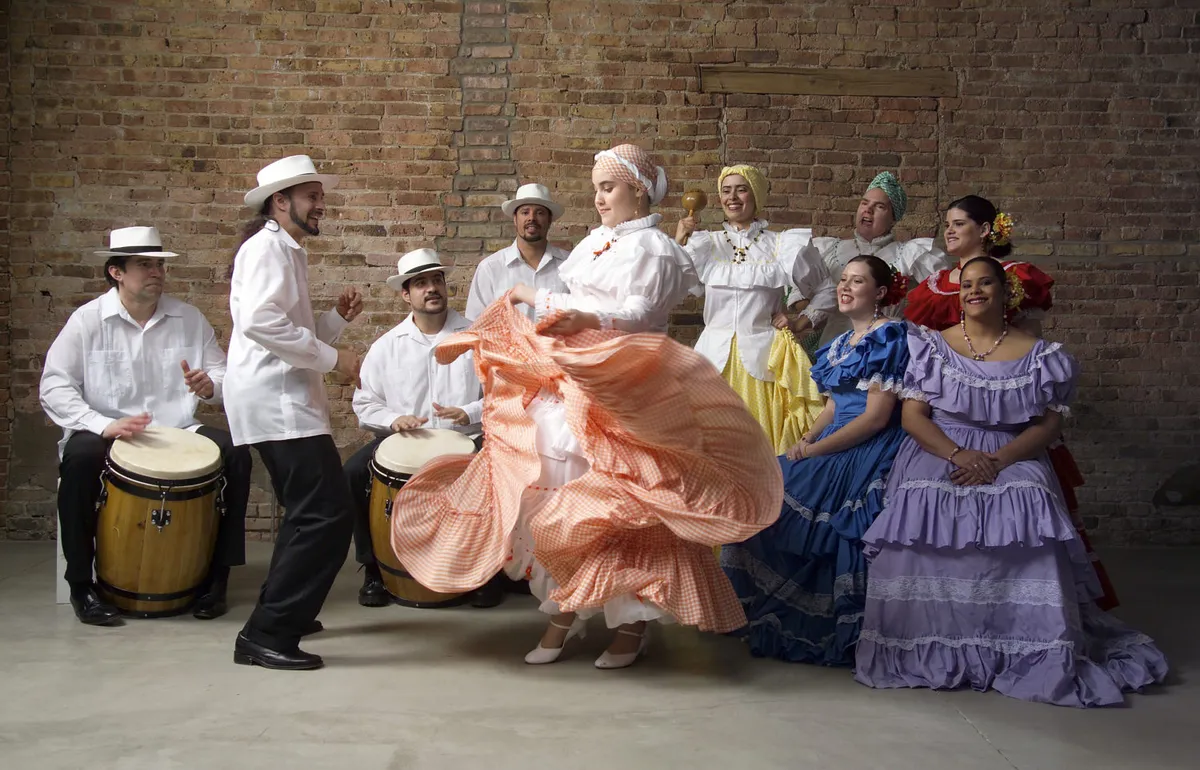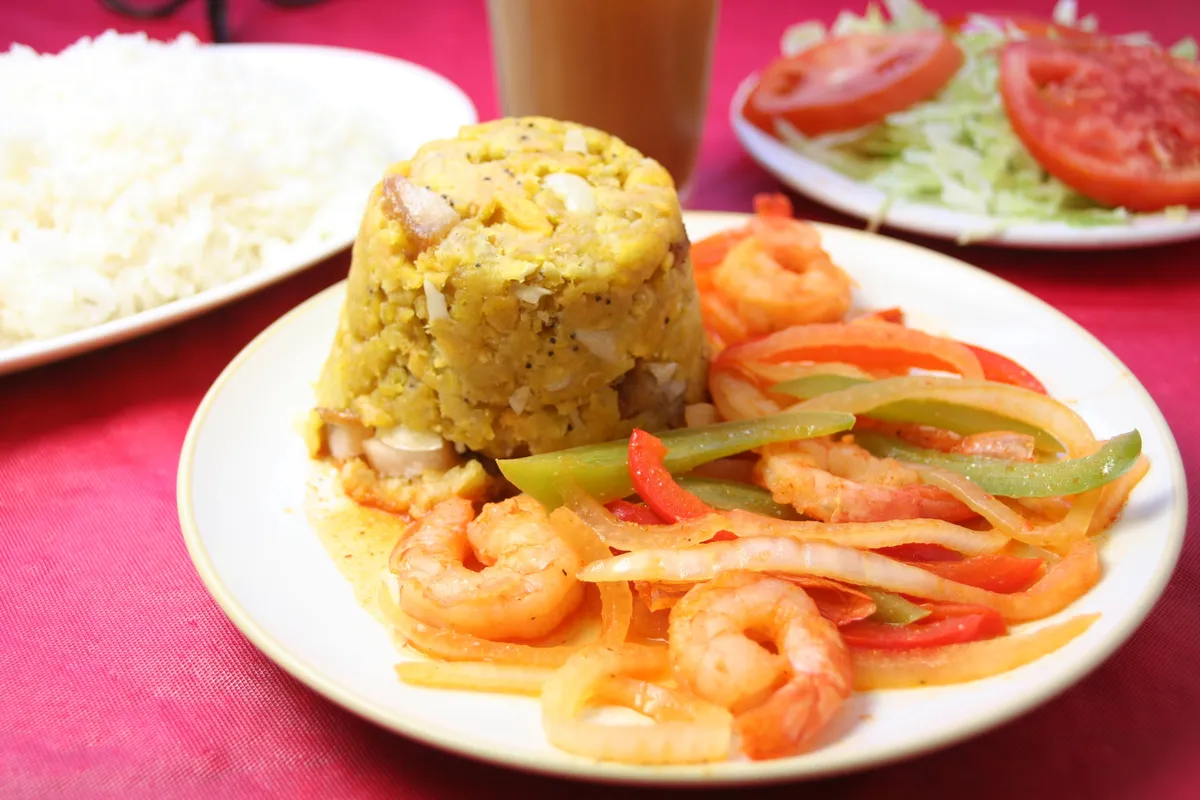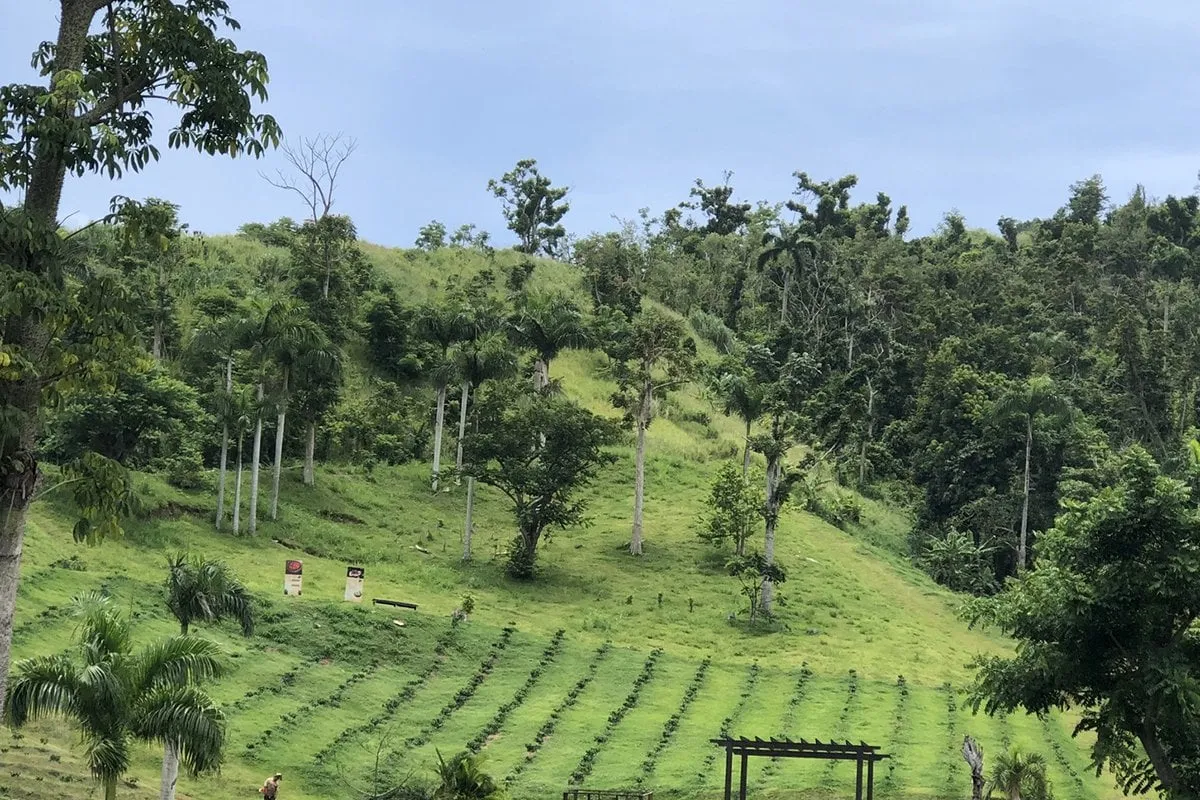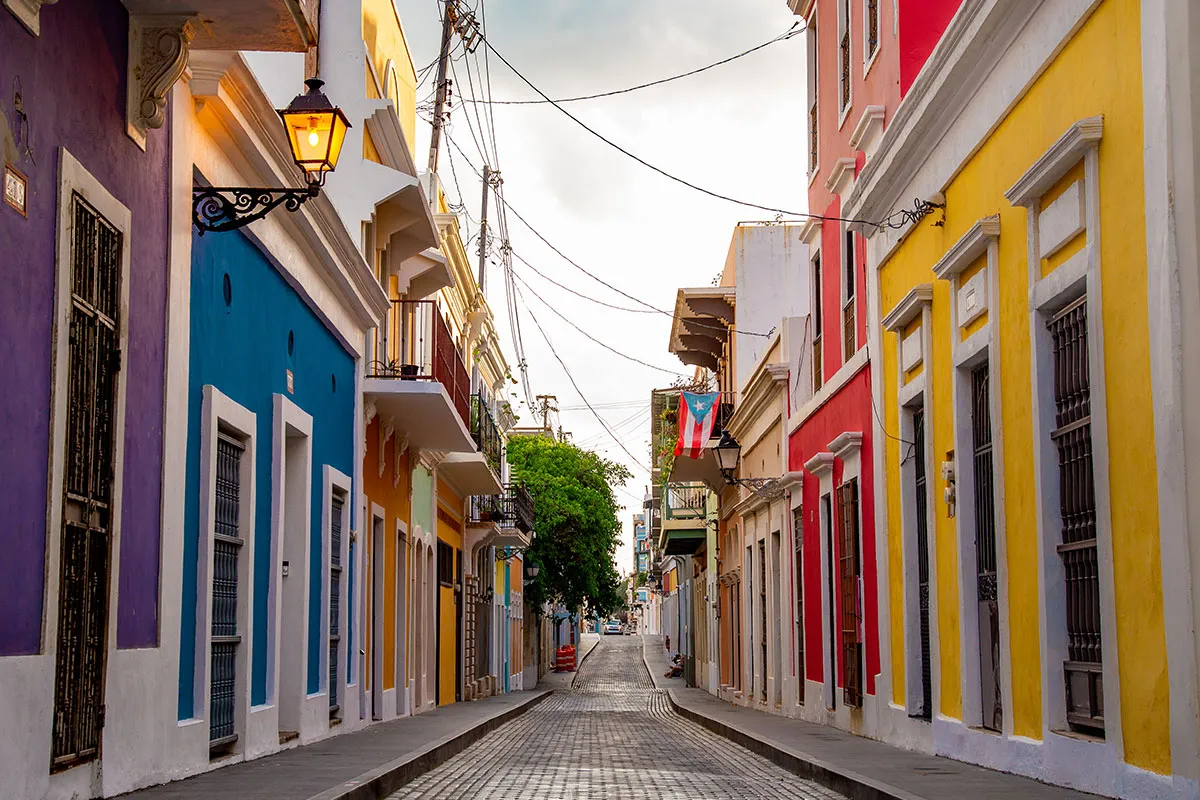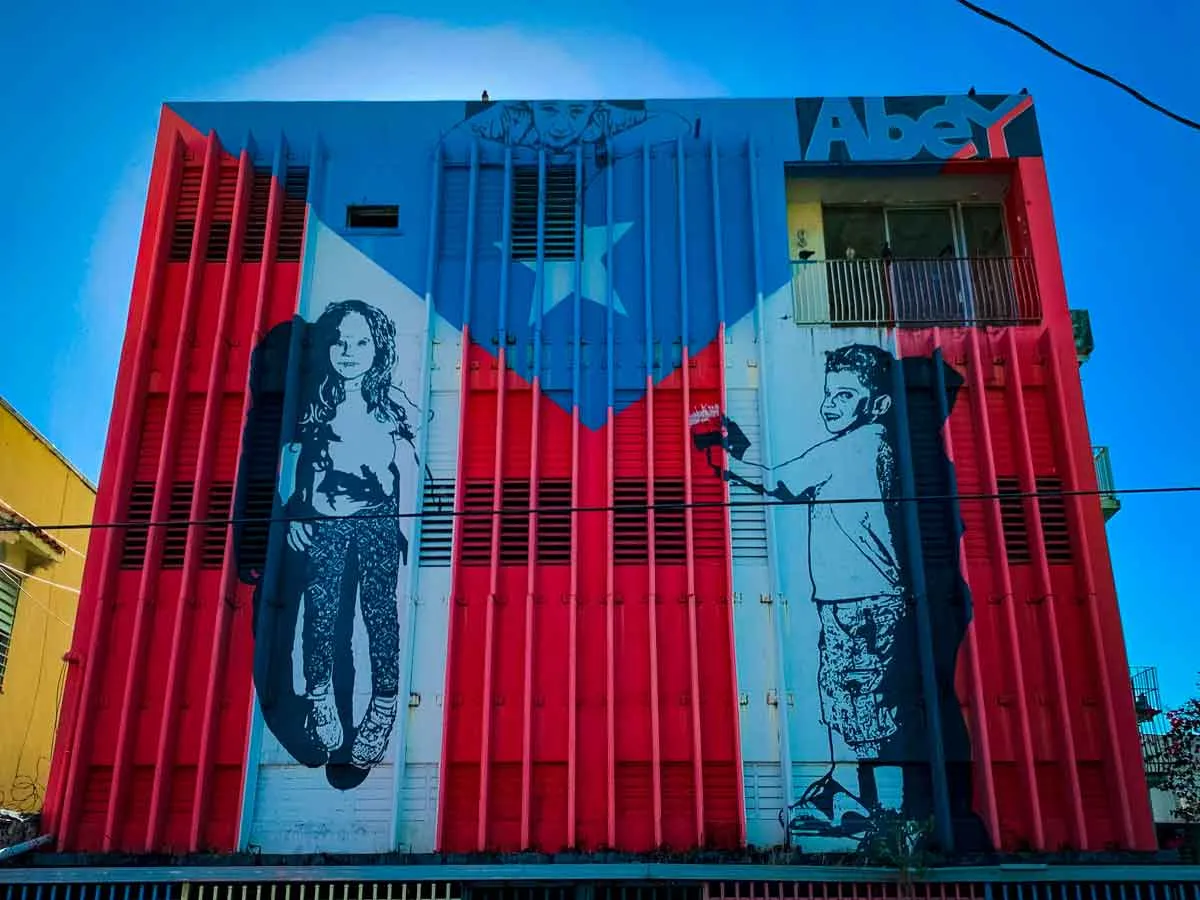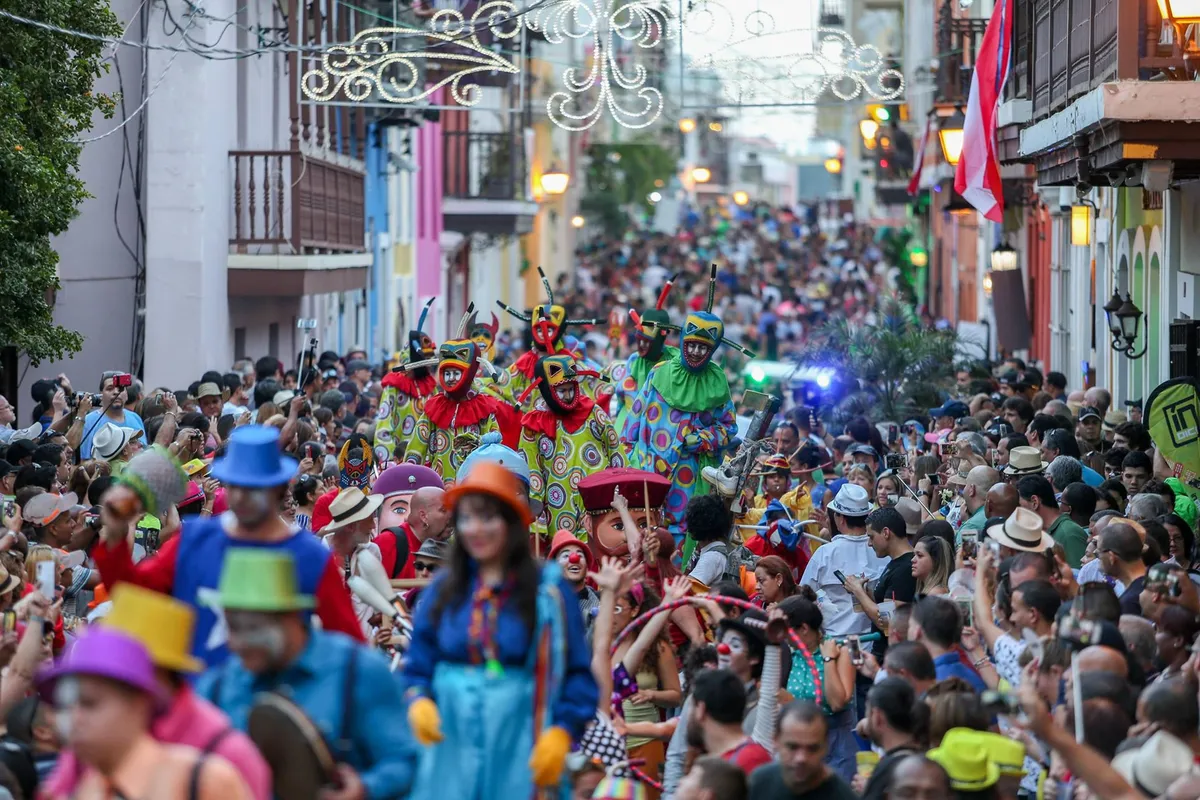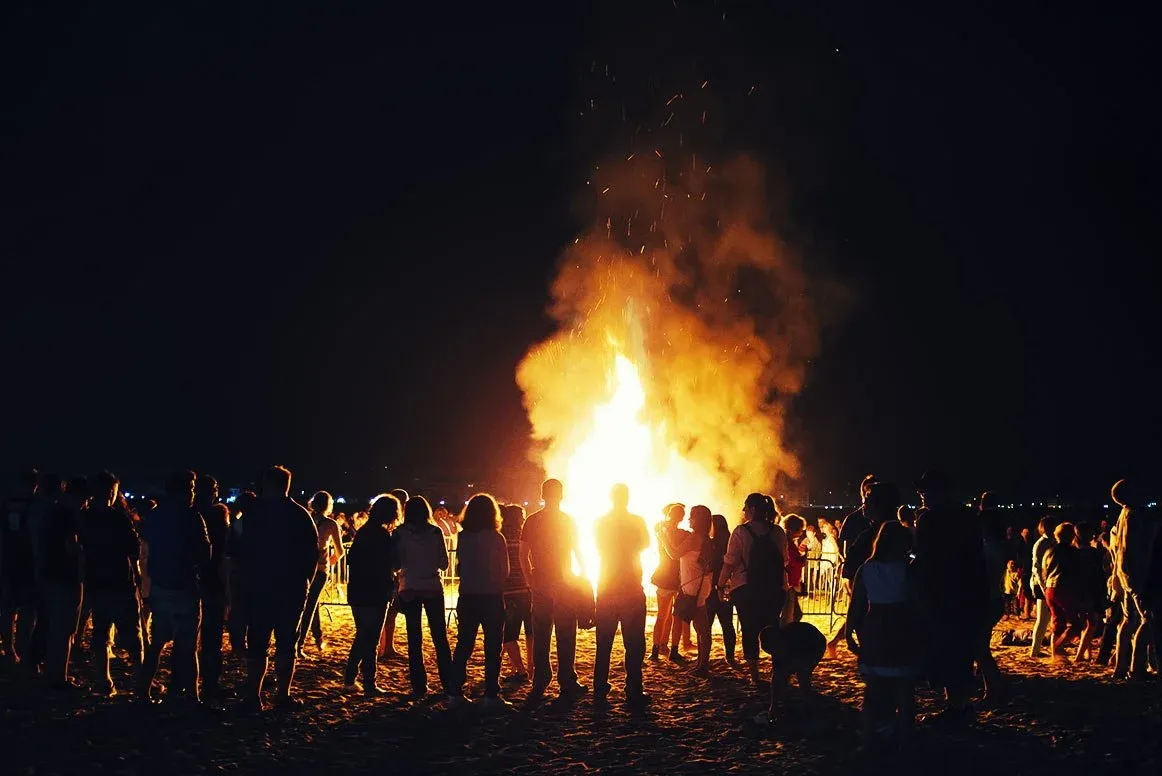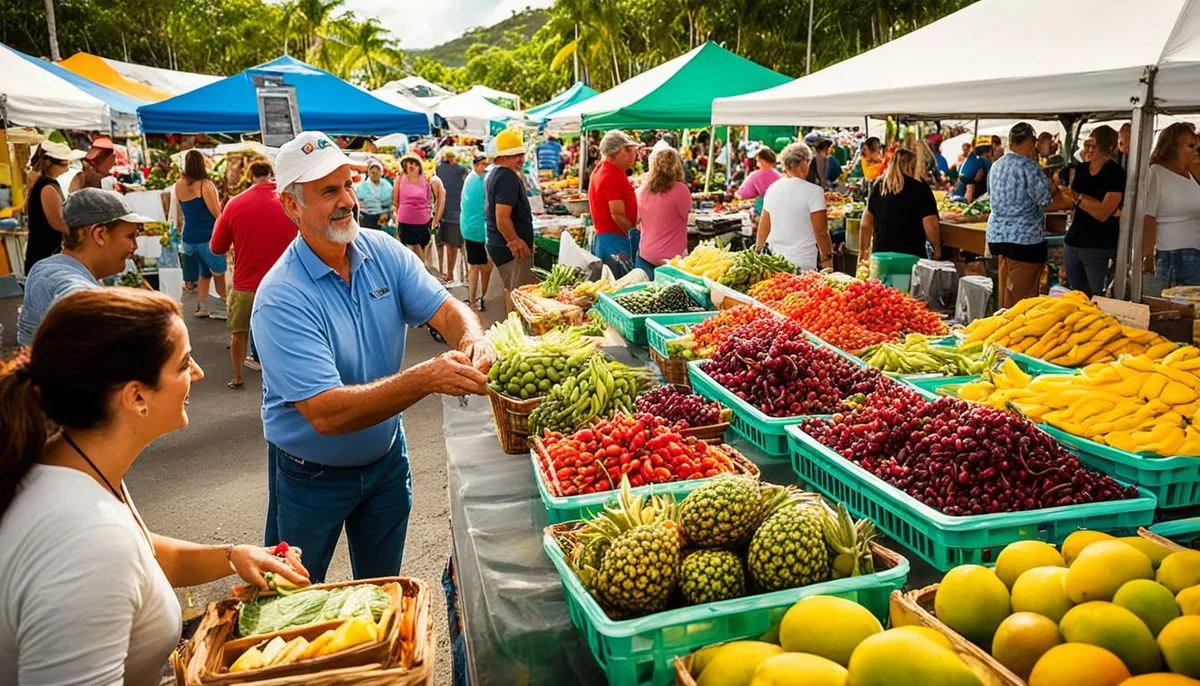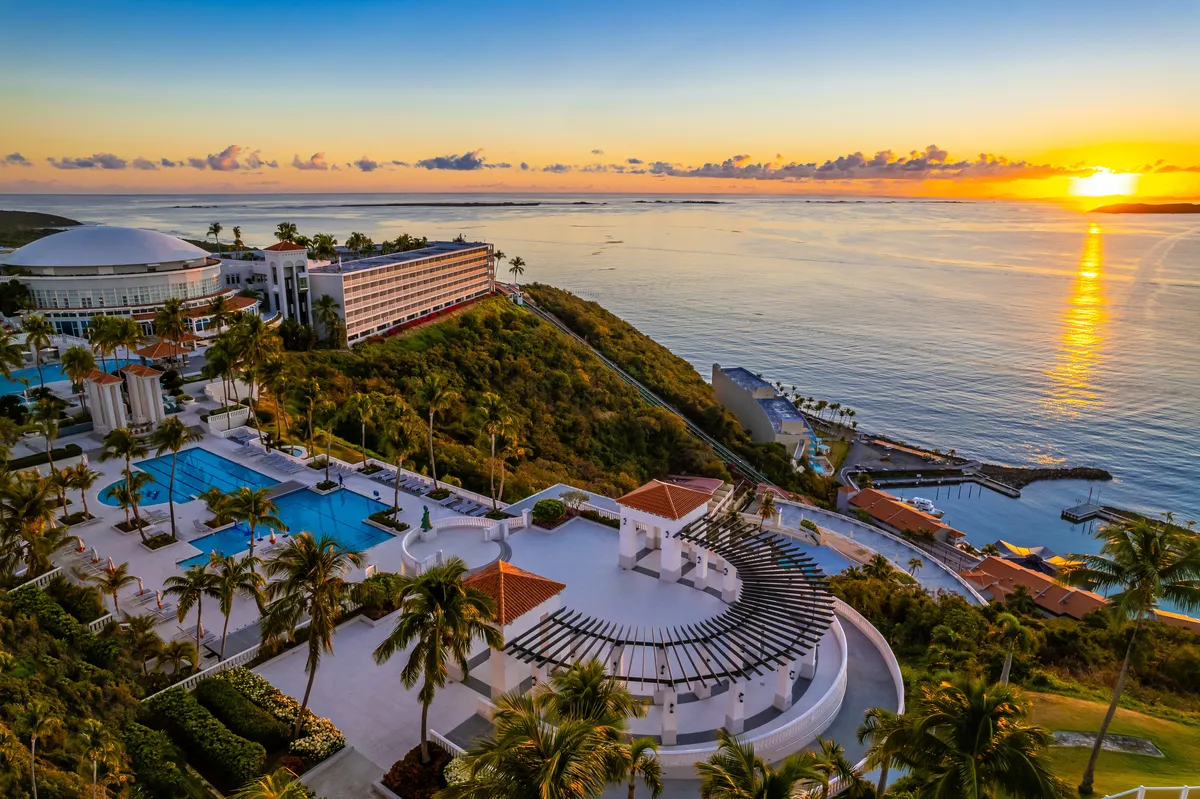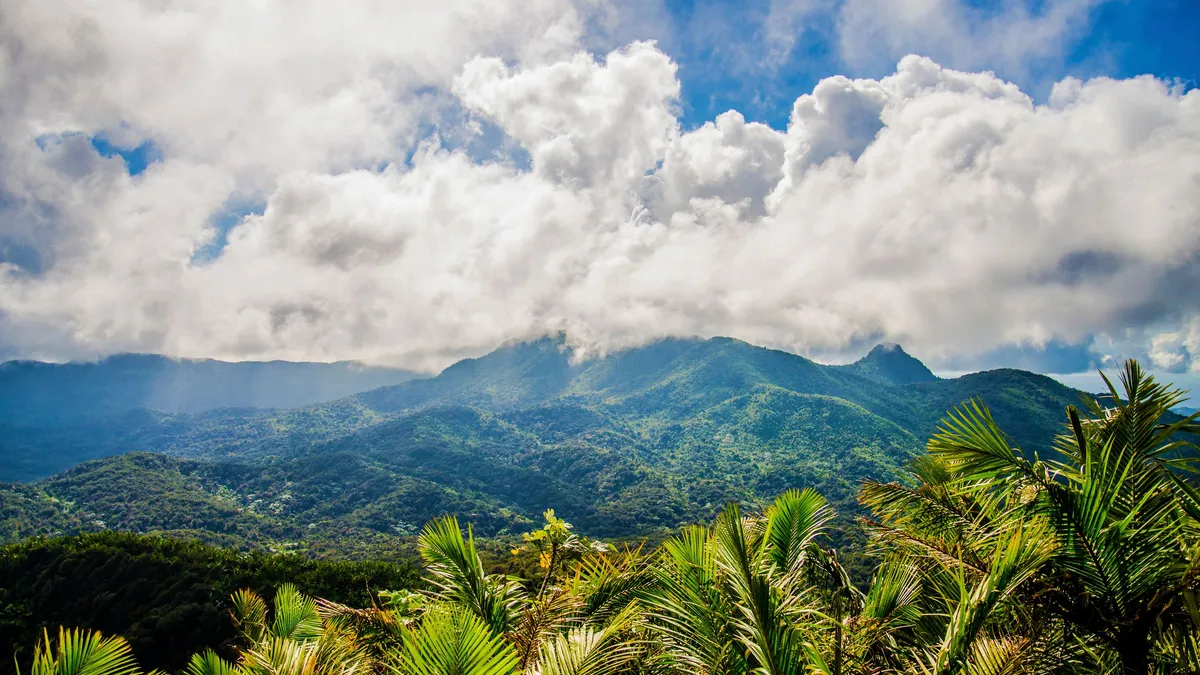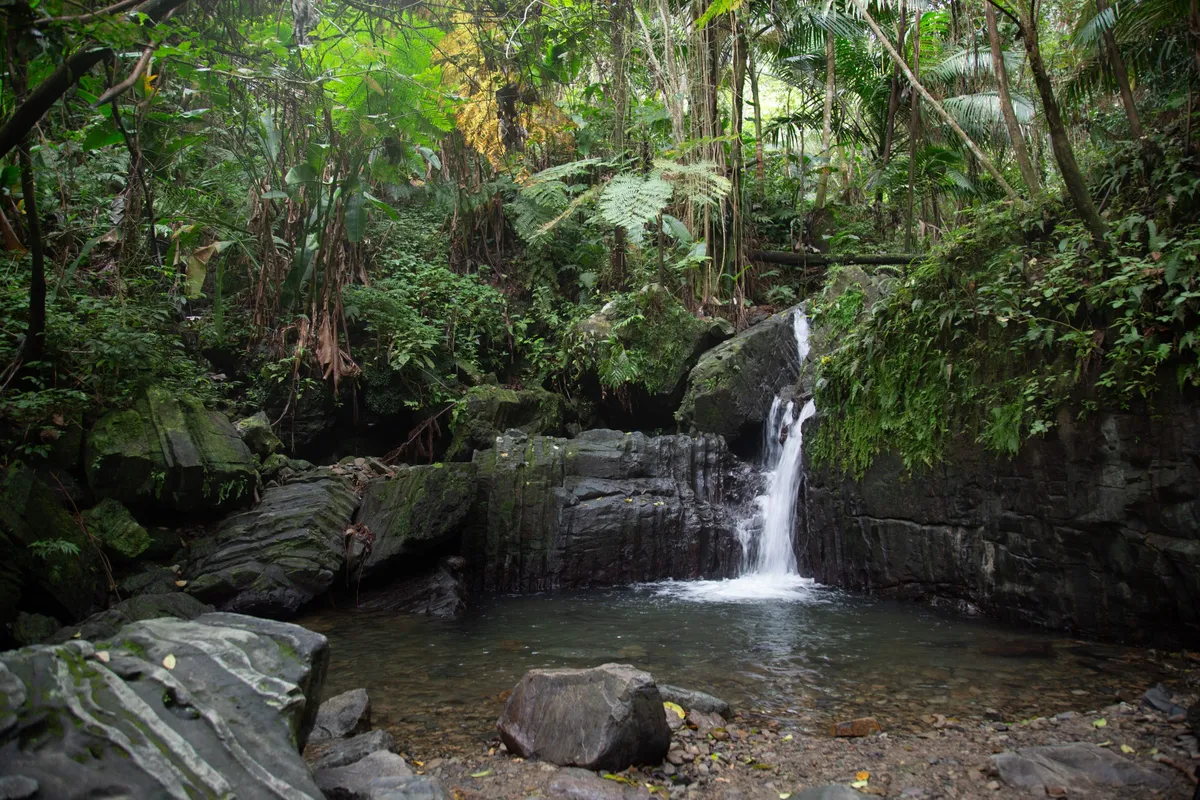Puerto Rico culture isn’t something you simply observe—it’s something you feel in every beat of a bomba drum, every bite of garlicky mofongo, and every vibrant mural in Santurce. The island’s identity, captured in the powerful word “Boricua,” represents a unique fusion of Taíno, Spanish, and African heritage that’s alive in its music, food, art, and festivals. If you’re looking to move beyond typical beach vacations and connect with the heart of this Caribbean destination, this guide will show you how to truly live like a local and experience the authentic Puerto Rican traditions that make the island so special.
Understanding Boricua: The Heart of Puerto Rico Culture
The term Boricua is your entry point into understanding Puerto Rico culture. Originating from Borikén, the name the indigenous Taíno people gave their island meaning “Land of the Valiant and Noble Lord,” this identifier represents deep-rooted pride in the island’s traditions, language, and community spirit. When Puerto Ricans call themselves Boricua, they’re honoring their indigenous legacy while embracing centuries of cultural fusion.
What makes this identity remarkable is how it’s lived daily rather than being preserved behind museum glass. Students on cultural immersion trips consistently note the profound “community connection and joy” that’s palpable everywhere, from church-led centers in Loíza to ecotourism projects in Ceíba. This authentic warmth and resilience define the Boricua spirit you’ll encounter throughout your journey.
The Cultural Foundation: Taíno, Spanish, and African Roots
Modern Puerto Rico culture emerged from three primary influences that created what locals call a “cultural and racial mosaic.” The Taíno people developed the island’s first culture, rooted in agriculture and nature worship. Spanish colonization lasting over 400 years brought language, Catholicism, and colonial architecture. Enslaved Africans contributed percussion-driven music, culinary techniques, and spiritual practices that became foundational to island life.
This fusion isn’t just historical—it’s actively present in everyday experiences that define the island. You’ll hear Taíno words like hamaca (hammock) and yuca (cassava) in regular conversation, worship in Spanish colonial churches, and dance to African-rooted bomba rhythms, all in a single day.
Bomba and Plena: Where Puerto Rico Culture Beats Loudest
The percussion-driven traditions of bomba and plena represent the soul of Puerto Rico culture, both emerging from African heritage but serving distinct purposes. Bomba dates back to 17th-century sugar plantations, where enslaved Africans used it as coded communication for resistance and spiritual expression. Plena developed in the early 20th century as “el periódico cantado” (the sung newspaper), telling stories about daily life and political events through music.
Experience Bomba in its Birthplace: Loíza
- Location: Loíza, just east of San Juan
- Best time: Year-round, workshops available through community centers
- Cost: Workshop fees typically $20-40 per person
- Contact: Corporación Piñones se Integra (COPI), Sector Piñones, Loíza, PR 00772
Loíza was founded by formerly enslaved Africans and remains the epicenter of Afro-Puerto Rican culture. Taking a bomba workshop here connects you directly with this living tradition. Instructors teach you the dynamic “conversation” where dancers perform improvised piquetes (expressive steps) and the primo drummer must follow every movement with matching beats. The Don Rafael Cepeda School of Bomba and Plena also offers authentic classes preserving this cultural legacy.
The workshops provide genuine cultural education, though some visitors note they require physical stamina and coordination. The authentic community setting in Loíza offers an unfiltered look at this tradition, though facilities are sometimes more basic than polished tourist venues.
Learn to Salsa: Your Dance Floor Introduction
Salsa pulses through Puerto Rico culture as its modern social heartbeat. While bomba tells historical stories, salsa gets you moving in bars, plazas, and dance halls from San Juan to Ponce.
Taking Your First Salsa Steps in San Juan
- Location: Piso Viejo, Calle Loíza neighborhood, San Juan
- Best time: Thursday evenings for “Salsa Thursdays”
- Cost: Free lessons, drinks priced separately
- Contact: Check current schedule on social media
Calle Loíza’s Piso Viejo hosts popular weekly sessions featuring free lessons followed by live orchestra performances. Tour operators also offer one-day classes, often paired with rum tastings. Travelers consistently praise the knowledgeable, interactive guides who make learning fun and accessible.
However, manage your expectations—dance floors can get crowded during peak times, and some group tours feel disorganized when numbers swell. Arriving early or seeking smaller classes provides a better experience. The combination of learning basic steps, sipping a classic mojito, and dancing to live music creates memorable cultural immersion despite occasional logistical hiccups.
A Culinary Journey: Tasting the Flavors of Puerto Rico Culture
Puerto Rico culture reveals itself deliciously through food that fuses Spanish, African, and Taíno influences. The island has evolved into a foodie destination where roadside kiosks serve traditional dishes alongside upscale restaurants offering innovative interpretations.
The Flavor Foundation: Sofrito, Adobo, and Sazón
Understanding Puerto Rican cuisine starts with three essential seasoning blends. Sofrito—a fragrant purée of onions, garlic, peppers, and cilantro—forms the aromatic base for countless dishes. Adobo, a dry spice rub with garlic powder, oregano, and salt, seasons meats before cooking. Sazón, containing coriander, cumin, and annatto, adds savory depth and the characteristic reddish-orange color.
Mofongo: The Dish You Absolutely Cannot Skip
This iconic creation traces its roots back to West African fufu but became a distinctly traditional Puerto Rican dish. Green plantains are fried, then mashed in a wooden pilón with fresh garlic and crispy chicharrones (pork cracklings). The result is a dense, savory dome served with chicken broth poured over the top or stuffed with stewed meats or seafood.
- Where to try it: Devadura, Old San Juan—a cozy spot beloved by locals and tourists
- Cost: $15-30 depending on protein additions
- What to expect: A chunky texture like mashed potatoes with crispy plantain bits
Travel bloggers note it’s “nearly impossible to visit a Puerto Rican restaurant without trying this plantain-based dish.” The texture should be cohesive but substantial, with crunchy chicharrón pieces throughout. Family-owned restaurants typically offer the most authentic preparations, though portions are hearty—so come hungry.
The Pork Highway: Guavate’s Roasted Pig Pilgrimage
- Location: Guavate, central mountains
- Best time: Weekends for the full atmosphere
- Cost: Plates typically $12-20
- Getting there: A car is recommended, about 45 minutes from San Juan
The Ruta del Lechón (Pork Highway) in Guavate showcases a part of Puerto Rico culture with Spanish culinary influence perfected over generations. Open-air lechoneras line this mountain road, where whole pigs slowly roast over open fires until the skin crisps perfectly and the meat becomes succulent. You’ll watch pigs turning on spits while enjoying freshly carved lechón asado with traditional sides like arroz con gandules (rice with pigeon peas).
The authentic atmosphere and quality justify the drive, though weekends bring crowds that mean longer waits. This casual, open-air setting lacks polish but delivers a genuine local food experience and festive energy.
Coffee Culture: From Bean to Cup in the Mountains
Puerto Rico’s volcanic soil once produced coffee exported to European royalty and the Vatican. While the industry has faced challenges, specialty Puerto Rican coffee has resurged, making hacienda visits rewarding cultural experiences.
Three Distinct Plantation Experiences
- Hacienda Buena Vista (Ponce): This location focuses on history as a living museum managed by Para la Naturaleza. The restored 19th-century plantation features water-powered machinery, including a unique hydraulic turbine. Tours emphasize the de Vives family legacy and the coffee industry’s boom years. Note this is educational rather than tasting-focused, and reservations are required.
- Cost: $12-15 per person
- Address: Highway 123, Km 16.8, Barrio Magüeyes, Ponce, PR 00731
- Hacienda Pomarrosa (Adjuntas): This spot offers bed & breakfast stays in charming cabins surrounded by coffee fields. The German-born owner has cultivated the property for over 50 years, providing intimate tours covering the entire bean-to-cup process. Stunning mountain views enhance the experience of savoring single-origin Arabica coffee.
- Cost: Tours $10-15; overnight stays $80-120
- Address: Road 518, Km 1.3, Adjuntas, PR 00601
- Sandra Farms (Adjuntas): This farm leads in sustainable, eco-friendly agriculture. Tours appeal to both coffee enthusiasts and environmental conservation supporters. A unique highlight pairs specialty coffee with artisan dark chocolates made from cacao grown on-property. Airbnb Experience reviews consistently praise passionate guides and spectacular mountain settings, though reaching the farm requires navigating winding, sometimes rough roads.
- Cost: $30-45 per person
- Getting there: 4WD recommended in wet conditions
Each hacienda serves different traveler interests—choose history, immersion, or sustainability based on your priorities.
Art and Architecture: Puerto Rico Culture in Living Color
Art in Puerto Rico culture extends far beyond gallery walls. From ancient Taíno petroglyphs carved into coastal caves to politically charged murals covering Santurce buildings, the island’s artistic expression reflects its history, identity, and resilience.
Ancient Art: Taíno Petroglyphs at Cueva del Indio
- Location: Arecibo, northern coast
- Best time: Morning for the best lighting
- Cost: Free (small parking fee)
- Address: Route 681, Km 8.3, Arecibo, PR 00612
- What to bring: Sturdy shoes, water
Cueva del Indio offers your most dramatic petroglyph encounter. This limestone cave is perched on cliffs above crashing Atlantic waves. Reaching the carvings requires descending a ladder into the cave—manageable but not wheelchair accessible. Inside, dozens of well-preserved Taíno carvings depicting faces, animals, and geometric symbols connect you tangibly with pre-Columbian culture.
The experience combines adventure with history, delivering stunning ocean vistas and authentic archaeological discovery. However, the site lacks formal facilities or guides, and weather conditions can make access challenging.
Old San Juan: Colonial Architecture as Art
- UNESCO World Heritage status: Designated historic district
- Best explored: On foot, allow a full day
- Key sites: Castillo San Felipe del Morro, Castillo San Cristóbal, Paseo de la Princesa
The 500-year-old walled city showcases Spanish colonial design through pastel buildings with ornate ironwork balconies, shaded courtyards, and iconic blue cobblestones (originally furnace slag used as ship ballast). Two massive fortresses anchor the city, offering both monumental military architecture and breathtaking panoramic views. Walking these streets immerses you in living history where families still inhabit colonial homes and local businesses operate in centuries-old structures.
Crowds can overwhelm the narrow streets during cruise ship arrivals, and authentic experiences require looking beyond tourist-trap restaurants.
Santurce’s Street Art Revolution
- Location: Santurce neighborhood, San Juan
- Best starting point: Calle Cerra
- Cost: Free, self-guided
- Best time: Weekdays for fewer crowds, morning for photography
Santurce transformed from a neglected urban area into one of the Caribbean’s largest open-air art districts over the past decade. Annual festivals like Santurce es Ley and Los Muros Hablan invite international artists to use building facades as canvases, creating massive, colorful murals.
The art carries powerful messages: cultural pride through jíbaro (resilient Puerto Rican farmer) depictions, Afro-Caribbean heritage celebrations, and political commentary critiquing colonialism and gentrification. Look for work by Alexis Bousquet, founder of Santurce es Ley, whose style appears throughout the neighborhood. This authentic neighborhood experience shows contemporary Puerto Rico culture thriving outside tourist zones. However, some streets lack shade, and gentrification concerns mean supporting local businesses is important while visiting.
Authentic Crafts: Supporting Puerto Rican Artisans
Traditional crafts offer meaningful souvenirs connecting you to Puerto Rico culture. Key items include vejigante masks (vibrant papier-mâché or coconut creations central to festival celebrations), santos de palo (carved wooden saint figures), and jewelry incorporating Taíno symbols.
Where to Shop in Old San Juan
- Weekend Artisan Market, Paseo de la Princesa: Local artists sell handmade goods along the scenic promenade. Meet the creators and hear the stories behind their work. Weekends only.
- Puerto Rican Art & Crafts: 204 Calle Fortaleza, Old San Juan, PR 00901—A wide selection of ceramics, sculptures, and original art celebrating island culture.
- The Artisan Corner: Calle Fortaleza, Old San Juan—Showcases rotating pottery, textiles, and woodwork from artisans across Puerto Rico.
Many Old San Juan shops sell mass-produced imports, so seeking recommended locations ensures authentic, locally made purchases. Prices reflect quality craftsmanship and are typically higher than in generic souvenir shops, but they support local artists directly.
Festival Immersion: Celebrating Like a Boricua
Puerto Rico culture shines brightest during its festivals. Nearly every town hosts fiestas patronales (patron saint festivals), but two major celebrations offer unparalleled immersion opportunities.
Fiestas de la Calle San Sebastián (SanSe)
- When: Mid-January, four days
- Where: Old San Juan
- Attendance: Hundreds of thousands
SanSe marks the grand finale of the world’s longest Christmas season with the island’s ultimate street party. Multiple stages host non-stop performances ranging from traditional plena and bomba to reggaetón. Streets fill with artisan vendors and food stalls serving pinchos (grilled skewers) and empanadillas. Giant papier-mâché cabezudos (character heads) parade daily through the crowds.
Planning tips:
- Book accommodations months ahead—Old San Juan sells out.
- Use organized ferries/shuttles from satellite locations (parking is impossible).
- Arrive early in the morning to beat the peak crowds.
- Wear comfortable shoes for the cobblestone streets.
- Stay hydrated in the tropical sun and festival excitement.
The festival delivers authentic communal celebration and cultural immersion. However, the massive crowds mean personal space becomes scarce, particularly in the evenings. The noise levels and party atmosphere may not suit travelers seeking quiet cultural observation.
Noche de San Juan: A Midnight Ocean Ritual
- When: June 23rd evening (St. John the Baptist’s Eve)
- Where: Beaches island-wide
- Cost: Free
This unique celebration blends Catholic tradition with pagan summer solstice rituals. As midnight approaches, people gather on beaches for bonfires, music, and picnics. At midnight, everyone walks backward into the ocean, falling or plunging into the water three, seven, or twelve times to wash away bad luck and ensure good fortune for the coming year.
Beach recommendations:
- Condado Beach: Younger, party-focused crowd with DJs.
- Balneario de Carolina: Family-friendly, authentic local atmosphere.
- Playa Buyé, Cabo Rojo: Community-focused celebration.
The collective ritual under the stars creates powerful, unifying experiences showing the spiritual dimension of Puerto Rico culture. Your choice of beach significantly affects your experience—research locations that match your preferred energy level. Popular beaches can get extremely crowded, and public facilities are basic.
Planning Your Cultural Immersion: Practical Considerations
The rich Puerto Rico culture deserves more than surface-level tourism. Understanding the practical realities helps you navigate the experience authentically.
Getting There and Around
US citizens don’t need passports—Puerto Rico is a US territory. The US dollar is the official currency, eliminating exchange concerns. While Old San Juan, Condado, and Santurce are walkable or accessible via ride-sharing, reaching mountain coffee plantations, Loíza, Guavate, or remote beaches requires a rental car. Public transportation is limited beyond San Juan’s core.
Safety: A Balanced Perspective
Tourist areas remain generally safe, particularly during the daytime. Exercise standard urban awareness: secure valuables, stick to populated areas at night, and ask hotel staff about neighborhoods to avoid. Old San Juan isn’t a budget destination—traditional dishes can cost $30 per meal, and pricing often surprises visitors expecting Caribbean bargains.
Sample 5-Day Cultural Itinerary
- Day 1: Old San Juan Immersion — Take a historical walking tour, visit the forts, shop for crafts on Paseo de la Princesa, and enjoy a guided food tour.
- Day 2: Rhythms of Resilience — Join a morning bomba workshop in Loíza, explore the Piñones boardwalk chinchorros in the afternoon, and take an evening salsa class in Santurce.
- Day 3: Mountain Flavors — Take a full-day coffee hacienda tour in the central mountains (choose based on your interests: history, immersion, or sustainability).
- Day 4: Art and the City — Visit the Museo de las Américas, take a self-guided Santurce street art tour starting on Calle Cerra, and experience the evening at La Placita de Santurce.
- Day 5: Beach Reflection — Spend the morning at Condado or Isla Verde, and have a final traditional meal before departure.
Key Resources: DiscoverPuertoRico.com (official tourism site), Museo de las Américas (Old San Juan cultural institution).
Puerto Rico culture isn’t a museum exhibit—it’s a living, breathing force that invites participation. The island’s resilience transformed oppression into celebration, fused the flavors of three continents onto single plates, and turned city walls into powerful statements of identity. Your true souvenir isn’t purchased in a shop but earned by engaging with the Boricua spirit: listening to the stories in a bomba drum, understanding the history in the food, and appreciating the community that binds the island together. By moving beyond the beaches to embrace these immersive experiences, you’ll carry home not just memories but a piece of Puerto Rico’s warmth, passion, and indomitable spirit.
Read more:
